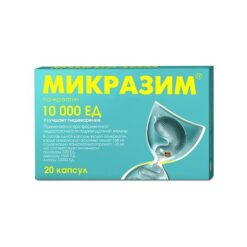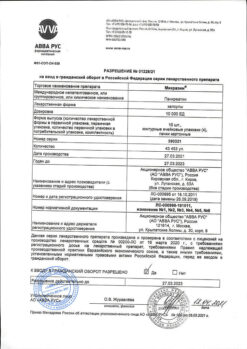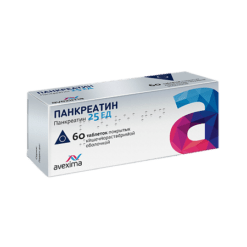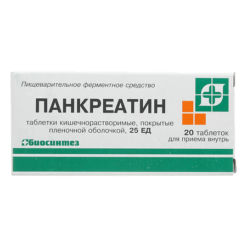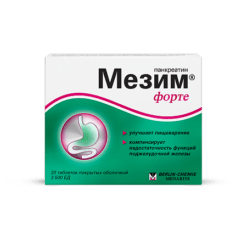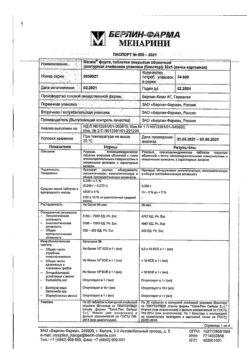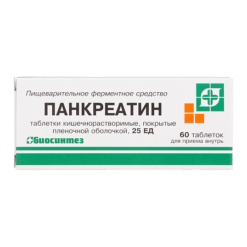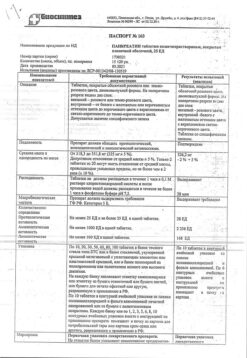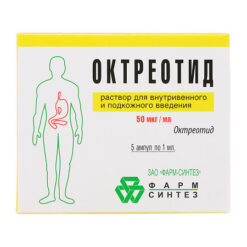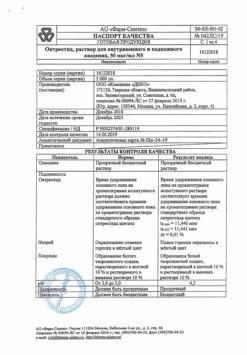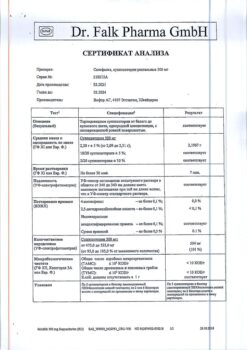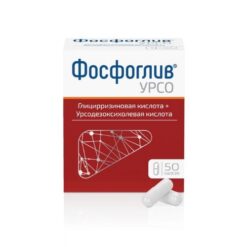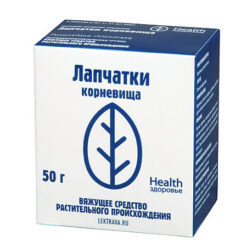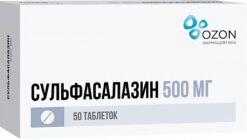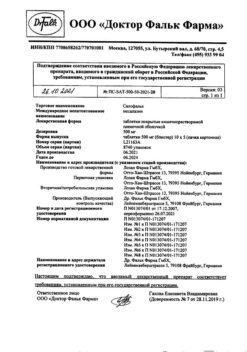No products in the cart.
Pancreatin Reneval 10000,10000 units 20 pcs
€5.11 €4.54
Description
Pharmacotherapeutic group: digestive enzyme. ATX code: A09AA02 Pharmacodynamics
Pancreatin is a powder from the pancreas glands of pigs. Pancreatic enzymes contained in pancreatin have proteolytic, amylolytic and lipolytic effect and contribute to the breakdown of proteins, fats and carbohydrates, improve the functional state of the gastrointestinal tract (GIT), thus normalizing digestion.
Pharmacokinetics
Pancreatin 10 000 tablets are covered with acid-resistant coating, which is resistant to the influence of gastric hydrochloric acid and thus protects the pancreatic enzymes contained in the preparation from inactivation. Dissolution of the enteric membrane and release of enzymes occurs at neutral or slightly alkaline pH values. Pancreatic enzymes are not absorbed from the gastrointestinal tract.
Indications
Indications
To improve food digestion in patients with normal gastrointestinal function in case of dietary errors;
insufficiency of exocrine pancreatic function (chronic pancreatitis, cystic fibrosis and others);
chronic inflammatory-dystrophic diseases of the stomach, intestines, liver, gall bladder;
conditions after resection or irradiation of the gastrointestinal tract, accompanied by impaired digestion of food, flatulence, diarrhea (as part of combination therapy);
preparation for x-ray and ultrasound examination of the abdominal organs;
gastrointestinal disorders of a functional nature (with acute intestinal infections, irritable bowel syndrome and others).
Pharmacological effect
Pharmacological effect
Pharmacotherapeutic group: digestive enzyme agent. ATC code: A09AA02 Pharmacodynamics
Pancreatin is a powder made from porcine pancreas. Pancreatic enzymes, which are part of pancreatin, have a proteolytic, amylolytic and lipolytic effect and promote the breakdown of proteins, fats and carbohydrates, improve the functional state of the gastrointestinal tract (GIT), thus normalizing digestive processes.
Pharmacokinetics
Tablets of the drug Pancreatin 10,000 are coated with an acid-resistant coating, which is resistant to the effects of hydrochloric acid of the stomach and, thereby, protects the pancreatic enzymes contained in the drug from inactivation. Dissolution of the enteric coating and release of enzymes occurs at neutral or slightly alkaline pH values. Pancreatic enzymes are not absorbed from the gastrointestinal tract.
Special instructions
Special instructions
In case of acute pancreatitis or exacerbation of chronic pancreatitis (at the stage of attenuation of the exacerbation), during the period of restorative dietary nutrition, it is advisable to take the drug Pancreatin 10,000 against the background of existing and/or remaining exocrine pancreatic insufficiency.
In patients with cystic fibrosis, especially when taking high doses of pancreatin, hyperuricosuria may occur, so urinary uric acid concentrations should be monitored in this group of patients.
In the above group of patients, strictures in the ileocecal and ascending colon are described.
As a precautionary measure, if unusual abdominal discomfort or changes in the nature of complaints occur, especially when taking more than 10,000 IU lipase/kg body weight per day, a medical examination is necessary.
The drug Pancreatin 10,000 contains active enzymes that, when released in the oral cavity, for example during chewing, can damage the oral mucosa (including the formation of ulcers). Therefore, the tablet must be swallowed whole.
Impact on the ability to drive vehicles and machinery
The drug Pancreatin 10,000 does not affect the ability to drive vehicles and other mechanisms.
Active ingredient
Active ingredient
Pancreatin
Composition
Composition
Active ingredient: Pancreatin1, corresponding to enzymatic activity: lipase – no less than 10,000 units, amylase – no less than 7,500 units, protease – no less than 375 units
Excipients: microcrystalline cellulose 102 – 52,000 mg, crospovidone – 18,000 mg, magnesium stearate – 1,867 mg, colloidal silicon dioxide (Aerosil) – 1,533 mg, lactose monohydrate – to obtain an uncoated tablet weighing 300,000 mg
Shell composition: methacrylic acid and ethyl acrylate copolymer (1:1) – 12,200 mg, talc – 6,780 mg, titanium dioxide – 5,050 mg, hypromellose – 4,800 mg, triethyl citrate – 3,900 mg, polysorbate 80 (Tween 80) – 0,690 mg, carmellose sodium (sodium carboxymethylcellulose) – 0.440 mg, macrogol 6000 (polyethylene glycol 6000) – 0.210 mg, simethicone emulsion 30% (dry weight)2 – 0.163 mg, dye azorubine (carmoisine) – 0.022 mg
1 The amount may vary depending on the lipolytic activity of the original substance. It is permissible to use a substance with lipolytic activity from 80 IU/mg to 44 IU/mg.
2 The emulsion contains simethicone (30%), emulsifiers (5-10%), preservatives (0.5-1.0%), purified water (60-65%).
Pregnancy
Pregnancy
The safety of using pancreatin during pregnancy and breastfeeding has not been sufficiently studied. Use is possible in cases where the expected benefit to the mother outweighs the potential risk to the fetus or infant.
Contraindications
Contraindications
– Hypersensitivity to any of the components of the drug;
– acute pancreatitis or chronic pancreatitis in the acute stage. However, it is possible to use it in the phase of a fading exacerbation when expanding the diet, if there are signs of digestive disorders;
– hereditary galactose intolerance, lactase deficiency or glucose-galactose malabsorption syndrome;
– children under 3 years of age (for this dosage form).
Side Effects
Side Effects
Possible side effects are listed below in descending frequency of occurrence: very common (≥ 1/10), common (≥ 1/100 to < 1/10), uncommon (≥ 1/1000 to < 1/100), rare (≥ 1/10,000 to < 1/1000), very rare (< 1/10,000), frequency not established (cannot be estimated from available data).
Immune system disorders
Very rare: immediate allergic reactions (such as skin rash, urticaria, sneezing, lacrimation, bronchospasm, dyspnea), gastrointestinal hypersensitivity.
Gastrointestinal disorders
Very rare: diarrhea, abdominal discomfort, abdominal pain, nausea, vomiting; formation of strictures in the ileocecal and ascending colon in patients with cystic fibrosis when using high doses of pancreatin.
Disorders of the genitourinary system
Frequency unknown: hyperuricosuria (see section “Special instructions”).
If you experience the side effects listed in the instructions, or they get worse, or you notice any other side effects not listed in the instructions, tell your doctor.
Interaction
Interaction
The absorption of folic acid may be reduced when used simultaneously with pancreatin preparations. The effect of oral hypoglycemic agents (such as acarbose, miglitol) may be reduced when used simultaneously with digestive enzyme preparations containing enzymes that break down carbohydrates (for example, amylase).
If you are using the above or other medications (including over-the-counter medications), consult your doctor before using Pancreatin 10,000.
Overdose
Overdose
Symptoms: hyperuricosuria, hyperuricemia (especially in patients with cystic fibrosis taking high doses of enzyme preparations).
Treatment: symptomatic therapy, drug withdrawal.
Storage conditions
Storage conditions
At a temperature not exceeding 25 °C.
Keep out of the reach of children.
Shelf life
Shelf life
3 years.
Manufacturer
Manufacturer
Update of PFC JSC, Russia
Additional information
| Shelf life | 3 years. |
|---|---|
| Conditions of storage | At a temperature not exceeding 25 ° C. Keep out of reach of children. |
| Manufacturer | Update PFC AO, Russia |
| Medication form | enteric soluble tablets |
| Brand | Update PFC AO |
Other forms…
Related products
Buy Pancreatin Reneval 10000,10000 units 20 pcs with delivery to USA, UK, Europe and over 120 other countries.


